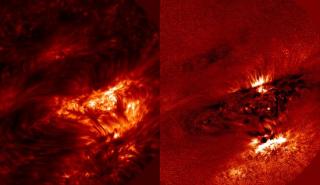The authors show that the surface structure of the primitive asteroid (65) Cybele is covered by a layer of fine anhydrous silicate grains, mixed with smaller quantities of water ice and complex organics, similar to the nonequilibrium phases coexisting on comet surfaces. The co-existence of water ice and anhydrous silicates on the surface indicates that silicate hydration did not occurred, suggesting that the surface temperatures remained low. The team of researchers is the same that published last April two papers in Nature showing the first evidence of water ice and organic molecules on an
Advertised on
